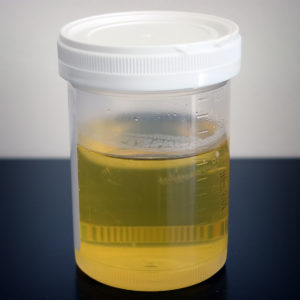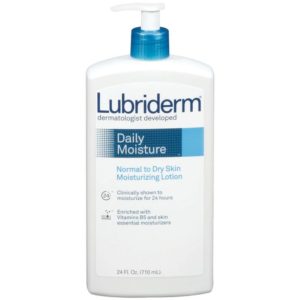 Did you ever wonder about all the consumer products that have fragrances in them and whether they are safe to use? Think of all the fragrances in personal care products and perfumes, in air fresheners, scented soaps, cleaning products, scented candles, even laundry detergents, and scented dryer sheets.
Did you ever wonder about all the consumer products that have fragrances in them and whether they are safe to use? Think of all the fragrances in personal care products and perfumes, in air fresheners, scented soaps, cleaning products, scented candles, even laundry detergents, and scented dryer sheets.
Fragrances are made up of many synthetic chemicals - with the "fragrance" in a product typically being a mixture of 50 to 300 chemicals. They are considered an important source of indoor air pollution and can have negative health effects on humans, especially developing fetuses and children. Fragrances are added to products to achieve a desired scent or mask other scents in the product. Air fresheners do not clean or freshen the air, but actually add chemicals to the air to mask other odors. Manufacturers are NOT required to disclose all the ingredients or chemicals in the products, and don't have to disclose any ingredients in any chemical mixture called "fragrance".
The few studies looking at health effects have found negative health effects, including on the lungs, respiratory effects, asthma, allergies, headaches, skin irritation, sensory irritation, hormonal effects, central nervous system effects, and inflammation. But more negative health effects are possible, especially because many of the chemicals are carcinogenic (cancer causing). We inhale the chemicals or absorb them through the skin, and from there they travel throughout the body - which is why they can be measured in the blood or urine.
Reading the studies that look at the chemicals emitted from scented products that people use every day can be overwhelming. Many of the studies specifically look at VOCs (volatile organic compounds) that the products emit, because these can affect air quality and human health. A big difficulty is that humans are exposed to mixtures of chemicals daily from many products, and the effects may take years to manifest themselves (such as cancer).
Bottom line: avoid, avoid, avoid fragranced or scented products if possible. Do not use scented detergent or dryer sheets (not necessary), do not use air fresheners (either in the home, workplace, or car), do not use incense or scented candles (post on scented candles). Read labels. Opening windows is the best way to air out a house or apartment. Studies find that fragrances labeled "organic", "natural", "green", or "with essential oils" basically emit the same toxic chemicals into the air (view such labels as marketing or "greenwashing") - therefore avoid those also.
Air fresheners are consumer products used in homes or in restrooms that typically emit fragrances, including incense, scented candles, aerosol liquid wick and electric diffusers, and gels. Depending on which air freshener is used (and including those labeled "all natural"), they emit varying levels of allergens and toxic air pollutants (and which can also combine to produce other pollutants - "secondary pollutants"): acetone, aldehydes, benzene, toluene, formaldehyde, terpenes, styrene, esters, phthalates (which are hormone disrupting chemicals), limonene, and also ultrafine particles. None of these toxic chemicals are listed on the product labels. Typically, a fragrance is listed simply as “fragrance,” even though each fragrance can contain hundreds of individual chemicals. Only this past year has one company (Glade) started posting online (but not on the packages) some of the many chemicals used in its scented products. ...continue reading "Health Reasons to Avoid Fragrances, Air Fresheners, Dryer Sheets"
 Today I am posting the story of one person writing about how hard it is to reduce contaminants, that is, unwanted chemicals, in our bodies. The story is by Nicholas Kristof, who has been eating organic foods and trying his best to avoid endocrine (hormone) disrupting chemicals (such as BPA) for a number of years. But the analysis of his urine showed that he wasn't able to totally avoid them.
Today I am posting the story of one person writing about how hard it is to reduce contaminants, that is, unwanted chemicals, in our bodies. The story is by Nicholas Kristof, who has been eating organic foods and trying his best to avoid endocrine (hormone) disrupting chemicals (such as BPA) for a number of years. But the analysis of his urine showed that he wasn't able to totally avoid them.
 Ten chemicals suspected or known to harm human health are present in more than 90% of U.S. household dust samples, according to a new study. The research adds to a growing body of evidence showing the dangers posed by exposure to chemicals we are exposed to on a daily basis. The chemicals come from a variety of household goods, including toys, cosmetics, personal care products, furniture, electronics, nonstick cookware, food packaging, floor coverings, some clothing (e.g., stain resistant), building materials, and cleaning products. How do the chemicals get into the dust? The chemicals can leach, migrate, abrade, or off-gas from the products, which winds up in the dust and results in human exposure. (That's right: vacuum a lot and wash your hands a lot, and try to avoid or cut back use of products with these chemicals,)
Ten chemicals suspected or known to harm human health are present in more than 90% of U.S. household dust samples, according to a new study. The research adds to a growing body of evidence showing the dangers posed by exposure to chemicals we are exposed to on a daily basis. The chemicals come from a variety of household goods, including toys, cosmetics, personal care products, furniture, electronics, nonstick cookware, food packaging, floor coverings, some clothing (e.g., stain resistant), building materials, and cleaning products. How do the chemicals get into the dust? The chemicals can leach, migrate, abrade, or off-gas from the products, which winds up in the dust and results in human exposure. (That's right: vacuum a lot and wash your hands a lot, and try to avoid or cut back use of products with these chemicals,) Did you ever wonder about all the consumer products that have fragrances in them and whether they are safe to use? Think of all the fragrances in personal care products and perfumes, in air fresheners, scented soaps, cleaning products, scented candles, even laundry detergents, and scented dryer sheets.
Did you ever wonder about all the consumer products that have fragrances in them and whether they are safe to use? Think of all the fragrances in personal care products and perfumes, in air fresheners, scented soaps, cleaning products, scented candles, even laundry detergents, and scented dryer sheets. Yes, the chemicals in personal care products and cosmetics you use absolutely get into your body, have effects, and can be measured in the urine. Of especially big concern are the endocrine (hormone) disrupting chemicals such as phthalates, parabens, triclosan, and oxybenzone (BP-3). This study shows that even taking a 3 day break from these chemicals lowers their levels in your body. The researchers found that : "The adolescent girls in this study experienced an average within girl decline of 27-45% in urinary concentrations of certain phthalates, certain parabens, triclosan, and oxybenzone after three days of abstaining from conventional personal care products and using replacement products with labels indicating they did not contain these chemicals."
Yes, the chemicals in personal care products and cosmetics you use absolutely get into your body, have effects, and can be measured in the urine. Of especially big concern are the endocrine (hormone) disrupting chemicals such as phthalates, parabens, triclosan, and oxybenzone (BP-3). This study shows that even taking a 3 day break from these chemicals lowers their levels in your body. The researchers found that : "The adolescent girls in this study experienced an average within girl decline of 27-45% in urinary concentrations of certain phthalates, certain parabens, triclosan, and oxybenzone after three days of abstaining from conventional personal care products and using replacement products with labels indicating they did not contain these chemicals."